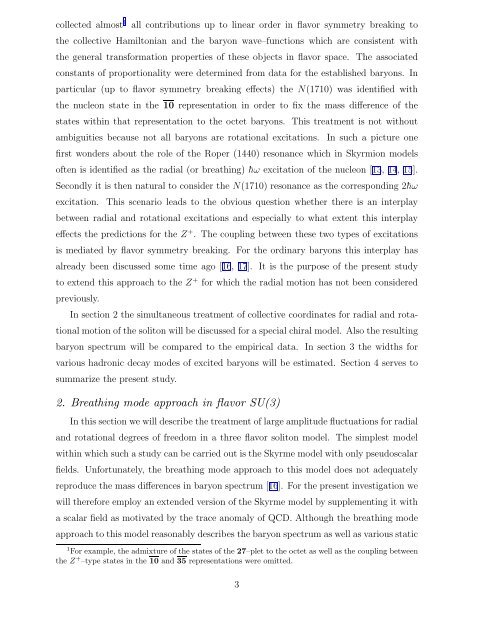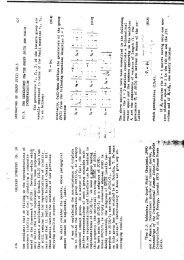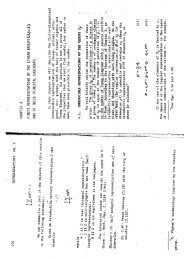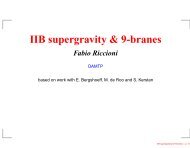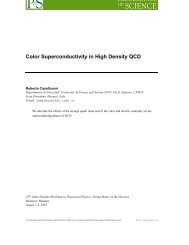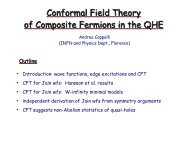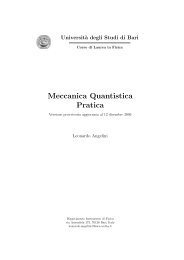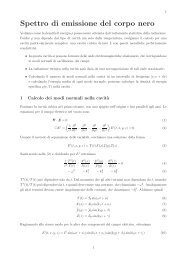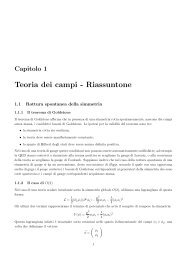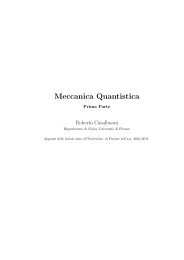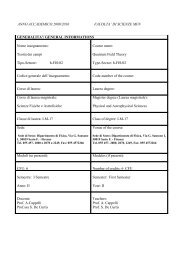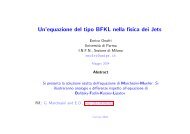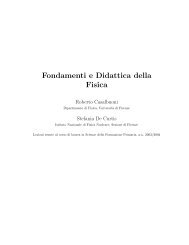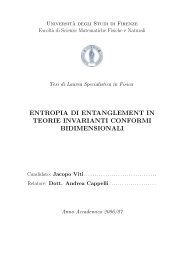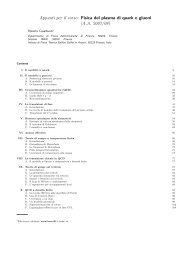arXiv:hep-ph/9804260 v2 16 Jun 1998 - Florence Theory Group
arXiv:hep-ph/9804260 v2 16 Jun 1998 - Florence Theory Group
arXiv:hep-ph/9804260 v2 16 Jun 1998 - Florence Theory Group
You also want an ePaper? Increase the reach of your titles
YUMPU automatically turns print PDFs into web optimized ePapers that Google loves.
collected almost 1 all contributions up to linear order in flavor symmetry breaking to<br />
the collective Hamiltonian and the baryon wave–functions which are consistent with<br />
the general transformation properties of these objects in flavor space. The associated<br />
constants of proportionality were determined from data for the established baryons. In<br />
particular (up to flavor symmetry breaking effects) the N(1710) was identified with<br />
the nucleon state in the 10 representation in order to fix the mass difference of the<br />
states within that representation to the octet baryons. This treatment is not without<br />
ambiguities because not all baryons are rotational excitations. In such a picture one<br />
first wonders about the role of the Roper (1440) resonance which in Skyrmion models<br />
often is identified as the radial (or breathing) ¯hω excitation of the nucleon [13, 14, 15].<br />
Secondly it is then natural to consider the N(1710) resonance as the corresponding 2¯hω<br />
excitation. This scenario leads to the obvious question whether there is an interplay<br />
between radial and rotational excitations and especially to what extent this interplay<br />
effects the predictions for the Z + . The coupling between these two types of excitations<br />
is mediated by flavor symmetry breaking. For the ordinary baryons this interplay has<br />
already been discussed some time ago [<strong>16</strong>, 17]. It is the purpose of the present study<br />
to extend this approach to the Z + for which the radial motion has not been considered<br />
previously.<br />
In section 2 the simultaneous treatment of collective coordinates for radial and rota-<br />
tional motion of the soliton will be discussed for a special chiral model. Also the resulting<br />
baryon spectrum will be compared to the empirical data. In section 3 the widths for<br />
various hadronic decay modes of excited baryons will be estimated. Section 4 serves to<br />
summarize the present study.<br />
2. Breathing mode approach in flavor SU(3)<br />
In this section we will describe the treatment of large amplitude fluctuations for radial<br />
and rotational degrees of freedom in a three flavor soliton model. The simplest model<br />
within which such a study can be carried out is the Skyrme model with only pseudoscalar<br />
fields. Unfortunately, the breathing mode approach to this model does not adequately<br />
reproduce the mass differences in baryon spectrum [<strong>16</strong>]. For the present investigation we<br />
will therefore employ an extended version of the Skyrme model by supplementing it with<br />
a scalar field as motivated by the trace anomaly of QCD. Although the breathing mode<br />
approach to this model reasonably describes the baryon spectrum as well as various static<br />
1 For example, the admixture of the states of the 27–plet to the octet as well as the coupling between<br />
the Z + –type states in the 10 and 35 representations were omitted.<br />
3


